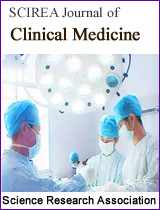Educational Needs of Dental Laser as Perceived by Dental Graduates of Kashmir: A Survey of Knowledge and Skill Requirements
DOI: 10.54647/cm32791 105 Downloads 13674 Views
Author(s)
Abstract
Background: The use of laser is limited by the dental graduates because of lack of knowledge, effectiveness and due to high cost of laser unit. Lasers not only reduces the need for anaesthetics causing no pain in children during dental treatment but also are used for caries prevention, restorative removal and curing, cavity preparation, dentinal hypersensitivity, diagnostic purposes and soft tissue applications of incision, excision, ablation, wound healing, gingivectomy, frenectomy ,removal of hyperplastic tissue in impacted or partially erupted tooth, photodynamic therapy for malignancies, photo stimulation of herpetic lesion and even reduces gag. Though introduced in 1964, its knowledge and implementation has increased lately in our part of world.
Aim: This survey based study was conducted to evaluate the knowledge on laser and its implementation in the field of dentistry among dental graduates in Kashmir.
Methodology: This cross-sectional, descriptive study was carried out among 68 dental students of Government Dental College and Hospital,Srinagar, Kashmir through a questionnaire where knowledge, attitude and practice was assessed and data were entered and analysed statistically.
Results: 100% of the respondents wanted training on Lasers where 50% of the respondents desired dental education and workshops on Laser in future and only 21% of the respondents were satisfied with their knowledge on Lasers during undergraduate curriculum
Conclusion: More and more education should be given on laser to increase its implementation in field of dentistry.
Keywords
Laser dentistry, Dental education, photodynamic theory
Cite this paper
Sana Farooq, Nazia Lone, Mohsin Sidiq,
Educational Needs of Dental Laser as Perceived by Dental Graduates of Kashmir: A Survey of Knowledge and Skill Requirements
, SCIREA Journal of Clinical Medicine.
Volume 7, Issue 2, April 2022 | PP. 128-138.
10.54647/cm32791
References
| [ 1 ] | Najeeb S, Khurshid Z, Zafar MS, Ajlal S. Applications of Light Amplification by Stimulated Emission of Radiation (Lasers) for Restorative Dentistry. Med Princ Pract. 2016;25(3):201-211. |
| [ 2 ] | Verma SK, Maheshwari S, Singh RK, Chaudhari PK. Laser in dentistry: An innovative tool in modern dental practice. Natl J Maxillofac Surg. 2012;3(2):124-132. |
| [ 3 ] | Boj J. The Future Of Laser Pediatric Dentistry. J Oral Laser Appl. 2005;5:173–7. |
| [ 4 ] | Nazemisalman B, Farsadeghi M, Sokhansanj M. Types of Lasers and Their Applications in Pediatric Dentistry. J Lasers Med Sci. 2015;6(3):96-101. |
| [ 5 ] | Avhad R, Jawade R, Sharma V, Shinde S, Nag A, Subramanian S. Evaluation of Dental students’ Knowledge and Attitude regarding Laser Dentistry- An Original study. J Adv Med Dent Scie Res 2019;7(9):135- 138. |
| [ 6 ] | Bordea R, Lucaciu O, Campian RS. Student’s knowledge and opinionregarding the need of implementation of Lasers in Dental Faculty curriculum. HVM Bioflux 2016;8:157‐60. |
| [ 7 ] | Koci E, Almas A. Laser application in dentistry: an evidance-based clinical decision-making update. Pak Oral Dent J. 2009;29(2):409–423. |
| [ 8 ] | Elbay M, Tak Ö, Şermet Elbay Ü, Kaya C, Eryılmaz K. The use of low-level laser therapy for controlling the gag reflex in children during intraoral radiog-raphy. Lasers Med Sci. 2016 Feb;31(2):355-61. |
| [ 9 ] | Goel H, Mathur S, Sandhu M, Jhingan P, Sachdev V. Effect of Low-level LA-SER Therapy on P6 Acupoint to Control Gag Reflex in Children: A Clinical Trial. J Acupunct Meridian Stud. 2017 Oct;10(5):317-323. |
| [ 10 ] | Al-Jobair A. Dental laser education and knowledge among final year dental students at King Saud University in Riyadh, Saudi Arabia. Saudi J Dent Res 2014;5:98-10 |
| [ 11 ] | Yadav S,Chaudhry S,Talwar S,Verma M.Knowledge and practices of dental lasers among dental professisonals in India: A survey based study.J Dent Lasers.2018; 12:50-5 |
| [ 12 ] | Smalley PJ. Laser safety: Risks, hazards, and control measures. Laser Ther. 2011;20(2):95-106. |

